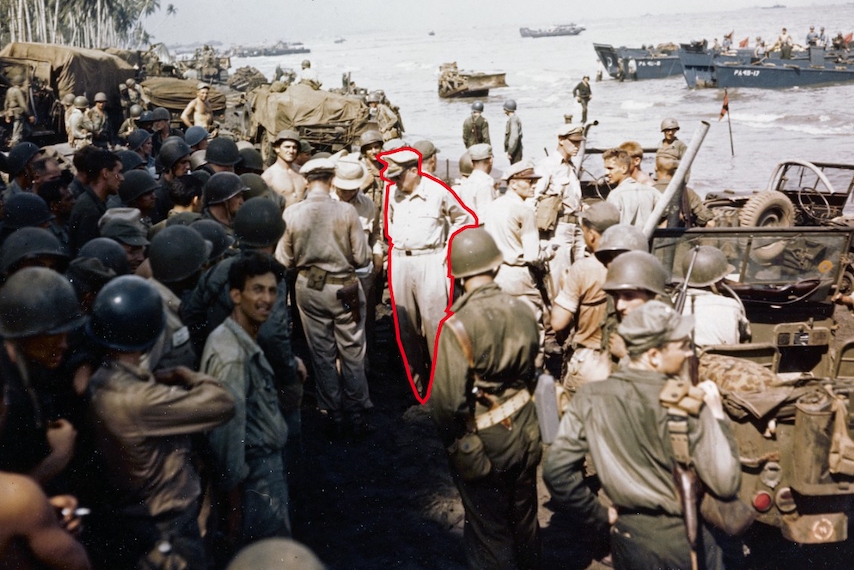The Platform
Latest Articles
by Peter Marko Tase
by Abdul Mussawer Safi
by Ifaz Ali Khan
by Sohail Mahmood
by Suraj Shah
by Raisa Anan Mustakin
by Theo Casablanca
by Staikou Dimitra
by Abeer Sharma
by James Carlini
by Peter Marko Tase
by Abdul Mussawer Safi
by Ifaz Ali Khan
by Sohail Mahmood
by Suraj Shah
by Raisa Anan Mustakin
by Theo Casablanca
by Staikou Dimitra
by Abeer Sharma
by James Carlini
General Douglas MacArthur Deserves Better Than Milwaukee’s Erasure
A war memorial in Wisconsin removed a tribute to General Douglas MacArthur.
The city’s War Memorial Center quietly removed an exhibit honoring a three-generation military legacy—ignoring both local history and the lasting geopolitical imprint of the MacArthurs.
Something is off at Milwaukee County’s War Memorial Center (WMC). For decades, the institution rallied veterans and civilians around a simple credo—“honor the dead by serving the living.” Today, many in that community feel alienated. The spark: a quiet decision in February 2024 to remove the “MacArthurs of Milwaukee” exhibit, which celebrated Judge Arthur MacArthur, General Arthur MacArthur Jr., and his son, General Douglas MacArthur—two Medal of Honor recipients whose family ties to the city once animated the very identity of the memorial.
The exhibit, dedicated on April 26, 2017 and loaned by the VCRT MacArthur Forum, was taken down without prior notice, according to the Forum. WMC leaders have suggested that commemorations should emphasize all veterans rather than focusing on individual heroes. But that framing misunderstands what the MacArthur collection did for the Memorial. It did not crowd out broader remembrance; it deepened it—placing the names on the Honor Roll Pool, the statue in MacArthur Square, and the center’s own origin story in a narrative arc that visitors could see and touch. Douglas MacArthur himself endorsed the creation of the WMC during an April 1951 visit to Milwaukee; when the Memorial opened five years later, his words were etched in marble beside the pool: “In tribute to those who did their duty as God gave them the light to do that duty.”

Milwaukee has marked that connection across generations. In 1979, Jean Faircloth MacArthur, the general’s widow, traveled to the city for the first MacArthur Memorial Week and the dedication of his statue in MacArthur Square. In 2014, the Veterans Community Relations Team organized a second MacArthur Memorial Week, moved the statue to Veterans Park on Lake Michigan, and launched what became the annual Kiwanis MacArthur–Nimitz Patriotism Luncheon in Memorial Hall. Three years later, the WMC unveiled the MacArthur family exhibit—positioning it as a permanent, living extension of the Memorial’s mission.
The removal achieved little beyond discord. Veterans who saw the display as a point of civic pride now see a blank wall. No equally compelling replacement has emerged. The episode culminates at a precarious moment for the WMC, which faces existential questions about governance and financing, even as the Milwaukee Art Museum looms as a potential inheritor of the lakefront complex. An institution with survival on the line should be looking for ways to unite its core constituency, not to fracture it.
This is not antiquarian fussing over a bronze likeness or a nameplate. The MacArthurs matter for reasons that reach far beyond Milwaukee. As Supreme Allied Commander in Japan from 1945 to 1951, Douglas MacArthur played a pivotal role in one of the most consequential transformations of the 20th century, guiding a defeated imperial military state into a democratic ally that now anchors U.S. strategy in the Indo-Pacific. In the shadow of China’s maritime buildup, Japan’s role—militarily restrained yet increasingly forward-leaning—owes something to MacArthur’s statecraft and to the constitutional and civic architecture put in motion under his watch. Recognizing that legacy isn’t hero worship; it’s historical literacy.
None of this argues for a Memorial that celebrates one family at the expense of every other veteran. It argues for telling Milwaukee’s story in full. The MacArthurs are part of that story—woven through the center’s courtyard inscriptions, its programming, and its public art. Removing the exhibit without community consultation suggests not a philosophy of inclusion but a philosophy of subtraction: if everyone is honored in the abstract, no one is honored in particular.
There are straightforward remedies. First, restore the exhibit or, if space or curatorial direction has shifted, reinstall an updated, well-interpreted version that connects the MacArthur lineage to the broader tapestry of Wisconsin service. Second, establish a transparent process for adding, recontextualizing, or retiring displays, with input from veterans’ groups and lending partners. Third, publish a coherent plan for the WMC’s financial and institutional future. Absent such steps, the Memorial risks drifting toward a future decided for it rather than one it decides for itself.
Milwaukee’s veterans deserve a home that remembers with precision and speaks with confidence. The War Memorial Center can be that place again. However, it will require leadership that views the MacArthur legacy not as a distraction from the mission, but as a doorway into it—a means to teach visitors why this lakefront building exists at all and why the words carved in stone there still hold meaning.
Editor’s note: This article reflects concerns raised by stakeholders over the removal of the “MacArthurs of Milwaukee” exhibit and the families’ historical ties to the War Memorial Center.
Peter Marko Tase is the author and editor of twelve books about Paraguayan history and foreign policy. He writes extensively about Latin America; the foreign policy, culture, and history of the Republic of Azerbaijan (including the economy of the Autonomous Republic of Nakhchivan, Azerbaijan) and has published many essays about Albania and the region of southeast Europe.